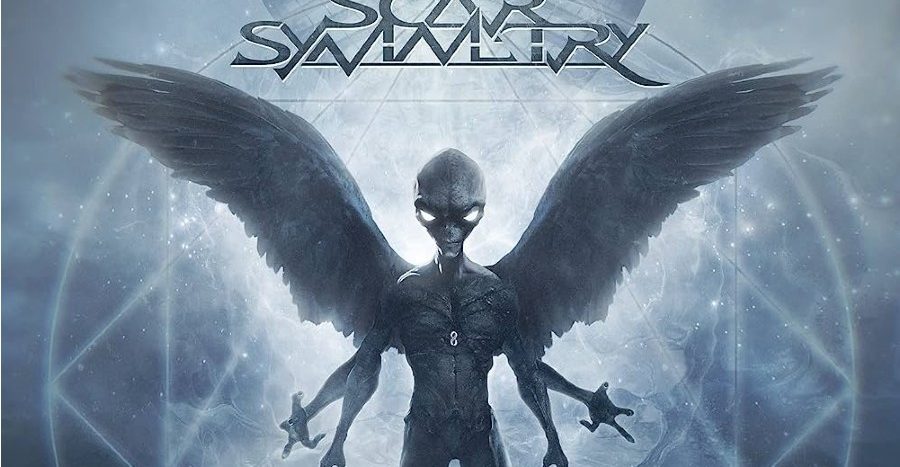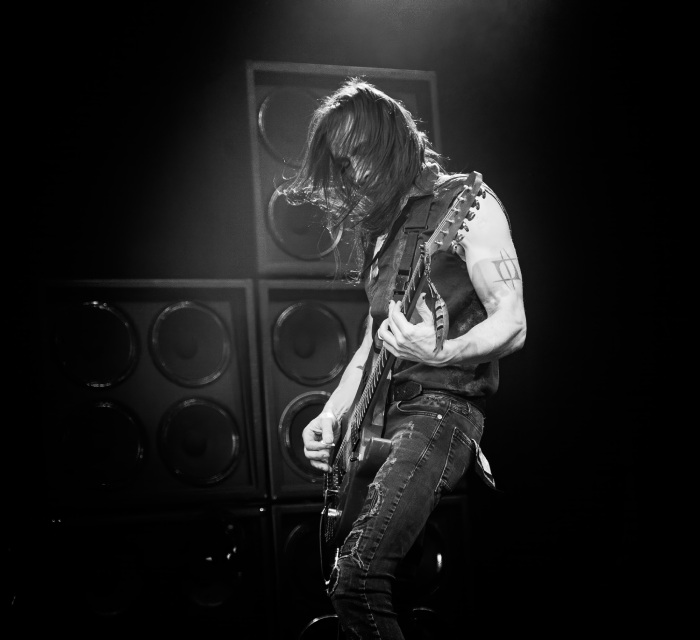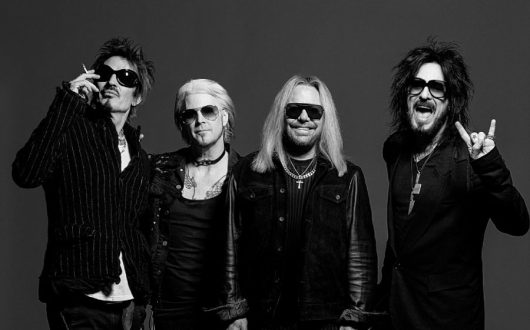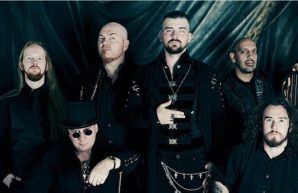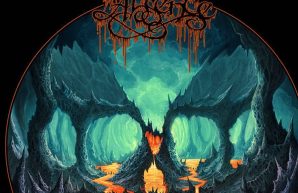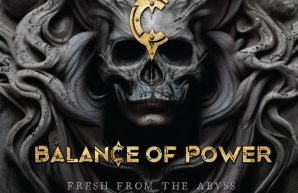Released By: Nuclear Blast Records
Release Date: June 9th, 2023
Genre: Melodic Death Metal/Progressive Metal
Links: https://www.
Line Up:
Lars Palmqvist – Clean Vocals
Roberth Karlsson – Harsh Vocals
Per Nilsson – Guitars, Bass, Keyboards,
Ben Ellis – Guitars
Henrik Ohlsson – Drums
Tracklist:
1. Chrononautilus
2. Scorched Quadrant
3. Overworld
4. Altergeist
5. Reichsfall
6. Digiphrenia Dawn
7. Hyperborean Plains
8. Gridworm
9. A Voyaged with Tailed Meteors
10. Soulscanner
11. Xenotaph
There are many melodic death metal bands out there who like to mix clean and harsh vocals, for a nice contrast between aggression, melody, and catchiness. Out of all those bands, one of the most successful and highly regarded is the Swedish band Scar Symmetry, which has built a strong reputation over the years for having fantastic, very technical, and at times brutal musicianship, mixed with aggressive harsh vocals, as well as some excellent melodic passages, filled with wonderful clean vocals. The way they mix the two fluidly and seamlessly is often quite impressive and has been the highlight of albums such as Holographic Universe, Unseen Empire, and of course their most recent release, The Singularity (Phase I: Neohumanity). After releasing the latter, the band went quiet for a long time, leaving fans to wonder if the expected follow-up would ever come. 9 years later the sequel, The Singularity (Phase II: Xenotaph), has finally arrived, and it builds upon everything its predecessor did while continuing to showcase the band at their absolute best.
Despite the long gap between albums, not much has changed since 2014, with only a couple of minor lineup changes, most notably the departure of bassist Andreas Holma, and the addition of second guitarist Ben Ellis. Otherwise, the core lineup remains intact, and the overall sound remains largely the same, offering the same kind of aggressive yet melodic, hooky yet complex progressive melodeath the band has always been known for. If anything, I’d say Phase I was probably the band’s most complex and adventurous release to date, with two mammoth epics bookending the album, while even some of the shorter songs had complex rhythms, unexpected passages seemingly out of nowhere, and generally it was just a very complex, yet highly entertaining album. Going into the new album, I’d say the last one had been my personal favorite from the band. For the most part, Phase II isn’t as overly progressive as its predecessor: There’s a focus on more straightforward tracks, with a classic verse-chorus structure, and none of the tracks get as complex as some of those on the previous album. However, I’d still say it’s more progressive than most of the band’s other releases, as even the simpler tracks have a lot going on, with a great balance between heavy, chunky guitar work, futuristic, often atmospheric keyboards, and some very melodic guitar work at times. There are plenty of moments where a track will be going one direction for a while, only for a surprise passage to show up out of nowhere and take it somewhere completely different for a minute or two, though more often than not, the song does eventually return to where it was before, so that’s why I’d say it’s not as openly progressive as Phase I could be at times.
As usual, the duality between clean and harsh vocals is as present and as effective as ever on this album. Some albums, such as Unseen Empire, had more of a larger focus on clean vocals, with the harsh vocals largely playing second fiddle, though that certainly isn’t the case on Phase II, which has about as close to a 50/50 split as you’ll ever find on this kind of album. Both vocalists are in top form, with Roberth Karlsson delivering intense, powerful growls, mostly staying in low to mid-range, while Lars Palmqvist delivers some super smooth, very light clean vocals, occasionally adding in a bit of a rock edge to add more intensity to certain parts. Both are given plenty of room to shine, with Palmqvist generally shining during the choruses, while Karlsson carries most of the verses, but both also have big moments that can come out of nowhere in the middle of a track, and there are also many portions where both vocalists play off each other and those parts are especially awesome. While the overall production and mastering are very good, as usual, the clean vocals do seem to be mixed a little bit lower than normal, which took some time for me to adjust to, but after a few listens it wasn’t a problem for me anymore.
Songwriting is also fantastic, with a nice mix between tracks that go all out with melodeath, even including quick bursts of tech death on a couple of tracks, while others are more laid back and more progressive, to change the pace up just a bit. All tracks do a nice job of alternating between the two vocalists, though, and I’d say one big theme of the album as a whole is contrasted, constantly switching between heavy and melodic, as well as catchy and complex. Lyrically, the album continues where Phase I left off, with humanity largely being taken over by AI, and fused into new beings, while the few remaining normal humans are left hoping for some form of salvation. For the most part, I was more focused on the music, but when I started paying more attention to the lyrics I found them quite entertaining and quite interesting, so it’s worth following along with them.
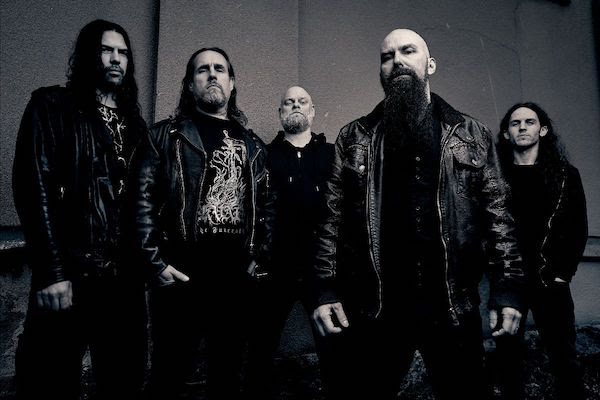
Despite being a concept album, there’s absolutely no wasted time in the beginning, as “Chrononautilus”, immediately kicks off with thundering drums, heavy riffs, and intense harsh vocals, and it never loses momentum as it goes along, alternating neatly between speedy, aggressive passages, and a fast-paced, very melodic chorus, full of strong clean vocals. For the most part, the track follows a predictable path, though there’s a very prog-feeling softer section in the middle, with some very light melodic guitar work, leading into a fantastic vocal section. Overall, it’s a fantastic track, which sets the mood for the rest of the album. Next is lead single “Scorched Quadrant”, another fairly straight-forward melodeath banger, moving at a slightly less frantic tempo, but still providing some heavy riffs and intense growls, while the chorus is sped up, with excellent melodic guitar work, frantic drums, light backing keys, and excellent clean vocals. Towards the end is a very soft section, where the keyboards have a bit of a classic Dream Theater feel to them, something which happens a couple of times on the album, but it doesn’t take long to get back to the heaviness and super hooky chorus.
One of the more melodic tracks on the album is “Overworld”, which moves at a pretty fast pace and has a very classic melodeath sound, with bits of power metal influence, alternating nicely between some very melodic guitar work with bursts of heaviness, as well as some light keyboards. While there are some harsh vocals, especially during the verses, the track is largely carried by Holmqvist, who delivers a fantastic performance, especially on the chorus and another very light and proggy keyboard-driven section towards the end of the track. This is followed by “Altergeist”, one of the darkest, most atmospheric tracks on the album, as well as being perhaps the most keyboard-dominant track, with some very dark, ambient, and moody keys taking up much of the track, while the guitars are heavy in bursts, and there are portions where the music enters tech death territory with some very frantic drums. For the most part, though, it’s one of the more relatively calm tracks on the album, still having plenty of heaviness, but largely being more atmospheric and subdued, with the outro, in particular, being beautiful.
Next is “Reichsfall”, another more traditional melodeath song, with some very beautiful melodic guitar work leading the way, before exploding into heavy riffs, intense drumming, and some nice interplay between both vocalists throughout the verses, before Palmqvist takes over for an excellent chorus. It’s another track that mostly stays light and melodic, but when the heaviness comes, it comes in a big way, especially during the instrumental section that closes out the track. The duality continues “Digiphrenia Dawn”, a more mid-tempo track, where the guitar sound and overall groove during the heavy parts largely remind me of Fear Factory at their most intense, while the chorus is very light and keyboard driven, with a nice duet between the two vocalists. As usual, there’s an extended instrumental section in the second half, where the music becomes more progressive, and the guitarists are given a big chance to shine.
A couple of more complex tracks are up next, with “Hyperborean Plains” coming first. There are portions where it feels like a calm and melodic track, as well as portions where it gets absolutely brutal, while the chorus falls somewhere in between, with a nice interplay between the two vocalists. There are lots of twists and turns on the track, making it a bit tough to fully digest in one or two listens, but over time it’s grown on me a lot. After that comes “Gridworm”, another very complex track. It starts with some atmospheric keys and guitar work, before quickly exploding into tech death territory, with a very heavy verse, and then going into slightly lighter territory with a nice clean vocal section. The track alternates between heavy and soft quite a bit as it goes on, with lots of work from both vocalists, as well as a couple of great instrumental sections, one early on and one towards the end, with the first of them being especially proggy. The track goes in many different directions throughout, but it does eventually return to where it started, for a fantastic ending.
The intensity is dialed up to near immeasurable levels on “A Voyage with Tailed Meteors”, by far the fastest-paced, most aggressive, and most tech death-influenced track on the album, with plenty of frantic blast beats, furious guitar work, and intense growls. There are clean vocals here and there on the chorus, as well as a later section where they briefly become the focus, but for the most part, this is very much a progressive death metal track, with a huge emphasis on aggressive guitars, drumming, and harsh vocals, and Karlsson slays on it, as expected. That track is followed by “Soulscanner”, another largely mid-paced track, which alternates nicely between heavy and melodic passages, with the main melody being especially impressive, and there’s some very technically proficient guitar work throughout, along with bursts of heaviness, some light keys and great performances from both vocalists. It’s one of the simpler tracks on the album, but it still has a ton going on and stays entertaining the whole way through. Closing out the album is “Xenotaph”, the longest track on the album. Surprisingly, though, it isn’t all that complex, as while it does have bursts of heaviness in the first half, it’s largely a very ambient, atmospheric track, with a big focus on moody keyboards and some excellent clean vocals. It’s a track where the music does an excellent job of setting the tone for the lyrics, largely being calm and mysterious, with a slightly sinister feel to it. The first half has some great harsh vocals and some very technical guitar work, while the second half is largely quiet, and closes out the album quite nicely.
Following a rather long absence, Scar Symmetry has returned in a big way with The Singularity (Phase II: Xenotaph), delivering more of what fans of the band have come to expect. It’s a bit catchier and more immediate than Phase I, but still maintains a lot of the progressiveness that album had, as well as striking a perfect balance between heaviness and melody, with fantastic songwriting and musicianship throughout, as well as excellent vocals from both Roberth Karlsson and Lars Palmqvist. Longtime fans of the band should be very happy, as this is undoubtedly the best kind of comeback one could hope for from the band, while new listeners would likely find a lot to enjoy here as well, though they might be better off starting with Holographic Universe or Unseen Empire first to get a feel for the band’s style, and then listen to both parts of The Singularity back to back for the best experience. Either way, this is a fantastic album, and I’m hoping to hear the final part of the trilogy way before 2032!
Ratings: 9/10
Written by: Travis Green
My Global Mind – Staff Writer
Travis Green is a Canadian based writer for My Global Mind, with a particular passion for power metal, as well as an interest metal in all its forms.
